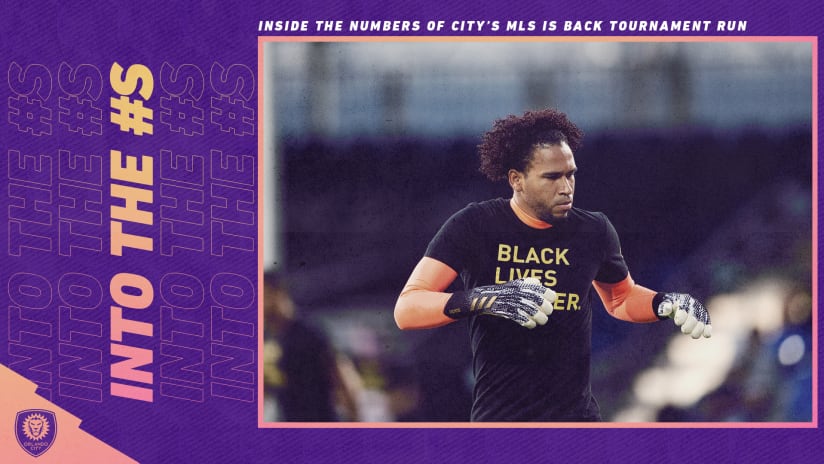Orlando City was the story of the MLS is Back Tournament, stunning the American soccer world with an exhilarating run to the tournament final. This was no Cinderella finding a fairy godmother, either–Orlando was very good for virtually the entire month and occasionally dominated more than credible opposition. Let’s take a closer look.
Expected goals tell the tale
One of my favorite metrics in soccer analysis is expected goals, or xG, which assigns a value between 0 and 1 to every shot based on how likely it is to be a goal. A penalty kick, for instance, goes in about 79% of the time, and so its xG value is 0.79. Single game xG can be wonky and depends a lot on if you’re trailing or leading, but over a span of several games, it tends to give you a pretty good picture of how many chances you’re creating vs. allowing.
Over the seven games they played in Disney, Orlando City registered 12.71 xG for and exactly 10.00 xG against, a +2.71 differential. This isn’t quite as high as their actual +5 goal differential, likely due to the outstanding goalkeeping of Pedro Gallese keeping the actual goals allowed number lower, but it does show that Orlando were consistently better than their opponents over the course of the tournament. Orlando lost the xG battle only twice in the seven games, to LAFC (where Gallese made some huge stops down the stretch) and in the final against Portland, where the Timbers’ 0.72-valued winner accounted for nearly half their total.
The ball is your friend
This Orlando team is blessed with a ton of players who are comfortable with the ball in almost every position, and the numbers from the MLS is Back Tournament bear it out.
Let’s look at the central midfield double pivot, so key for Orlando City’s ability to keep possession and play through opposing presses effectively. Each member of the starting double pivot, whether it be Uri Rosell, Sebas Méndez, or Júnior Urso, had a passing accuracy of at least 85% in every single game of the tournament with the exception of the LAFC game, where the Black and Gold high press forced Orlando to go wide with their possession.
That was fine, though, because Orlando has perhaps the best pair of fullbacks in MLS at the moment in Joao Moutinho and Ruan. The two play drastically different styles–Moutinho is more of a playmaker who can tuck inside and hang back a bit while Ruan is a blazer who can blow past opposing left backs. But in five of the seven games, it was one of the two fullbacks who led Orlando City in touches. Both contributed assists over the course of the tournament as well, while Moutinho famously scored the equalizer against LAFC, and both were named to the tournament Best XI.
And of course, Orlando City showed off a two-headed playmaking monster at MLS is Back in the form of Nani and Mauricio Pereyra. One of the two led Orlando in key passes (passes that lead directly to a shot) in six of the seven games, with the Portuguese captain putting in perfect deliveries from the left wing while the Uruguayan held court in the center of midfield. Both players, particularly Pereyra, also helped with Orlando’s stifling counterpress, and the two combined to score five of Orlando’s 12 goals as well.




